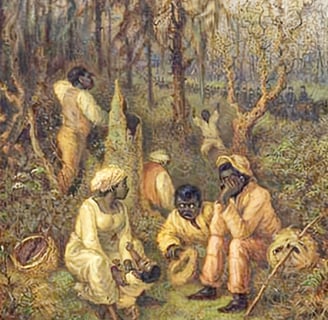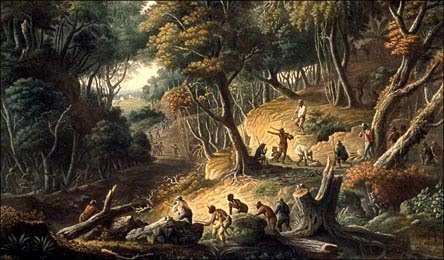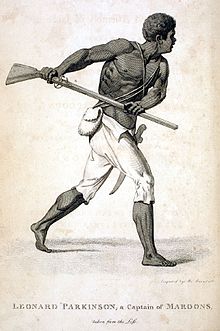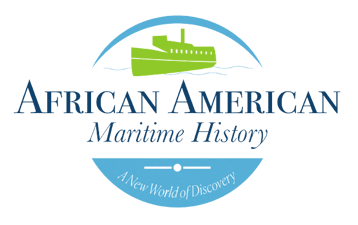African American Maritime History Series #7: Freedom Seekers and the Maritime Maroon Societies


African Maroon societies were historically recognized as existing throughout the African diaspora: from the Carolina islands and the Florida peninsula in the United States, within the mountains of Jamaica and into the Suriname (FKA Dutch Guiana) jungles. One of the earliest known African Maroon societies developed in Suriname as early as the 17th Century. After revolting by escaping from slavery, Maroons formed their own settlements in swampy, hidden maritime areas. They often mixed with indigenous peoples, eventually evolving into separate creole cultures such as the Garifuna and the Mascogos. Once the Maroon communities were established by men, women and children joined the runaways. Knowledge of the Maroon Societies is an essential part of African American Maritime history and culture.
The English word “Maroon” is a derivative of the Spanish word cimarrón, which is based on an Arawakan root. Cimarrón initially described cattle that had escaped and were living in the hills in Hispaniola. Soon the term evolved to define the enslaved indigenous populations who escaped from the Spaniards on Caribbean islands.
Maroons could not bear to be enslaved, so they ran away and established their own communities, often deep in the woods, swamps, and nearby hidden waterways. They became important sectors of maritime history and culture. The word, Maroon, has continued to mean a type of fierceness, independence, wildness, and the possession of an unbroken spirit. By the mid-16th century, the word was used to refer to African runaways from enslavement in the Americas.
In the United States, as early as the 1650s and before the abolition of slavery, Maroon communities existed in South Carolina, Virginia, North Carolina, Florida, Louisiana, Alabama, and probably other southern states. Between 1700 and 1724, the many revolts, established Maroon societies and the more than 50 insurrections aboard slaving ships posed a potential threat to the 13 British colonies.Historians point to the Great Dismal Swamp, on the border between Virginia and North Carolina, as the largest Maroon colony from that period in the America. Other well-known Maroon sites included the out islands of Georgia, South Carolina, and Florida.


The Maroons sought to ensure their freedom and maintain their African culture and beliefs. They had come from different African countries and tribes. They often had initially spoken dissimilar languages as they gathered largely via a process of inter-African cultural syncretism. They survived by creating ways of survival in the wilderness.Maroons made or acquired the necessary tools, shelter, and weapons they needed. they established small farms and developed ways to fish and hunt for food. They fortified their communities against attack while engaging in guerilla warfare against neighboring plantations which provided a way out for other enslaved freedom seekers.The communities were self-governed, and for the most part, peace was maintained. Maroons sought ways to trade safely with outsiders. They always had to be mindful of keeping their colonies a secret for as long as possible while also allowing additional freedom seekers to join them. Betrayal or discovery by enslavers could lead to death and destruction of the Maroon communities. When located, Maroon colonies were often burned to the ground after recapturing and torturing and killing those who had failed to escape.
Maroons created a constant threat of insurrection for plantation owners because of their intense hatred for the institution of slavery. They were constantly on the alert to defend themselves by any means necessary to guard against re-enslavement. Historians have described Maroons as tenacious, creative, self-confident, fearless, and resilient. Among the enslaved populations, Maroons became folk heroes. Moreover, Maroons became the hallmarks of freedom for a life of servitude. Free Blacks and runaways were still subjected to white supremacy; only Maroons were self-ruled.
Newly imported African slaves fled South Carolina to establish Maroon communities in Florida in the late 1600s, a tradition that was continued by American-born fugitives from South Carolina and Georgia well into the nineteenth century. Slave resistance escalated along with colonial struggles for liberty. In Georgia, a group of enslaved men, women and children took advantage of the confusion created by the Stamp Act by fleeing into the swamps and managed to elude capture for four years -- prompting the Georgia assembly to send a detachment of militia after them. In Florida, Black Seminole towns were built by Maroons who were allied with the indigenous Seminole tribe. Called “Black Seminoles,” these Maroon colonies found refuge in central Florida swamps or hidden riverways.


During the Revolutionary War, the British often armed rebellious free, enslaved, and runaway Black men, trained them in military warfare, and taught them how to use the weapons of war. After the war, the ones who qualified to leave with the British did so. The ones that were left behind continued their rebelliousness by establishing Maroon areas and resisting re-enslavement.
A large group of men and women erected twenty-one houses and planted rice fields in a clearing near the Savannah River. The site measured 700 yards long and 120 yards wide and was protected by a four-foot-high log-and-cane barrier on the land side and large fallen logs on the creek side. From this base in the swamps, "Captain Cudjoe" and "Captain Lewis" led an armed group of 100 men who called themselves "the King of England's Soldiers" in bold attacks on plantations and on Georgia state troops.
By 1787, this band of guerrilla fighters posed a serious enough threat that the Georgia legislature deployed state troopers to find and destroy the Maroon village. Although six Maroons were killed and others wounded, most of the people fled into the South Carolina swamps. Heeding the advice of James Jackson, commander of the Georgia militia, the governors of South Carolina and Georgia launched a joint mission against the Maroons. Lewis was captured, tried, and hanged. Afterwards, his head was severed and placed on a pole. Despite this brutal warning, numerous reported occurrences of guerrilla attacks continued.
In 1795, a Maroon community led by "General of the Swamps" formed near Wilmington, North Carolina. After numerous complaints by whites, a bounty was placed on the General's head, and special hunting parties succeeded in routing the fugitives and killing the General. Guerrilla attacks by Maroons continued until the end of slavery, despite numerous but ineffectual attempts to wipe out such settlements.


South Carolina Maroons
By 1708, enslaved Africans formed a majority of the population in South Carolina: The largest concentrations of African people at that time were located on rice plantations on the coasts where up to 80% of the total population—white and Black—was made up of enslaved people. There was a constant influx of newly enslaved Africans during the 18th century, and during the 1780s, fully one-third of the 100,000 enslaved workers in South Carolina had been born in Africa.
Total Maroon populations are unknown, but between 1732 and 1801, enslavers advertised for more than 2,000 self-liberated people in South Carolina newspapers. Most returned voluntarily, hungry, and cold, back to friends and family, or were hunted down by parties of bounty hunters and dogs.
While the word "Maroon" was not used formally, they were defined very clearly in South Carolina slave laws. "Short-term fugitives" would be returned to their enslavers for punishment, but "long-term fugitives" from enslavement—those who had been away for 12 months or longer—could be lawfully killed by any white person.
Enslaved boat sailors had a lot of latitude and freedom in the maritime world of South Carolina because boats were the major source of transportation between the plantations and from the plantations to the port cities. Boats were also the only method of getting raw goods from the plantations for exportation either within the colonies or to the global seas. The plantation seamen knew the waterways intimately and far superior to the plantation owners or anyone else in the community of colonists.
Therefore, they were able to secret people off the plantations and manage their travel time in a way to drop food, supplies, other goods and people off in a Maroon community while conducting their normal duties. The plantation boatmen had some of the most personal freedom among enslaved people.In the 18th century, one small Maroon settlement in South Carolina included four houses in a square measuring 17x14 feet. Another larger one measured 700x120 yards and included 21 houses and cropland, accommodating up to 200 people. This town's people grew domesticated rice and potatoes and raised cows, pigs, turkeys, and ducks.
Houses were located on the highest elevations; pens were built, fences maintained, and wells dug.The Maroon communities comprised a major component of African American Maritime History and should be explored further as these communities resulting from rebellion against human enslavement clearly displayed the will and tenacity of so many enslaved people seeking freedom by any means necessary.
References & further reading
Agorsah, E.K., Ed. (1994). Maroon Heritage: Archaeological, Ethnographic and Historical Perspectives. Kingston, Jamaica: Canoe Press.Heuman, G., Ed. (1982). Out of the House of Bondage: Runaways, Resistance and Marronage in Africa and the New World. London: Frank Cass.Price, R., Ed. (1996). Maroon Societies: Rebel Slave Communities in the Americas (3rd edition). Baltimore: Johns Hopkins University Press.Reed, P. D. (2017, June 30). maroon community. Encyclopedia Britannica. https://www.britannica.com/topic/maroon-community


